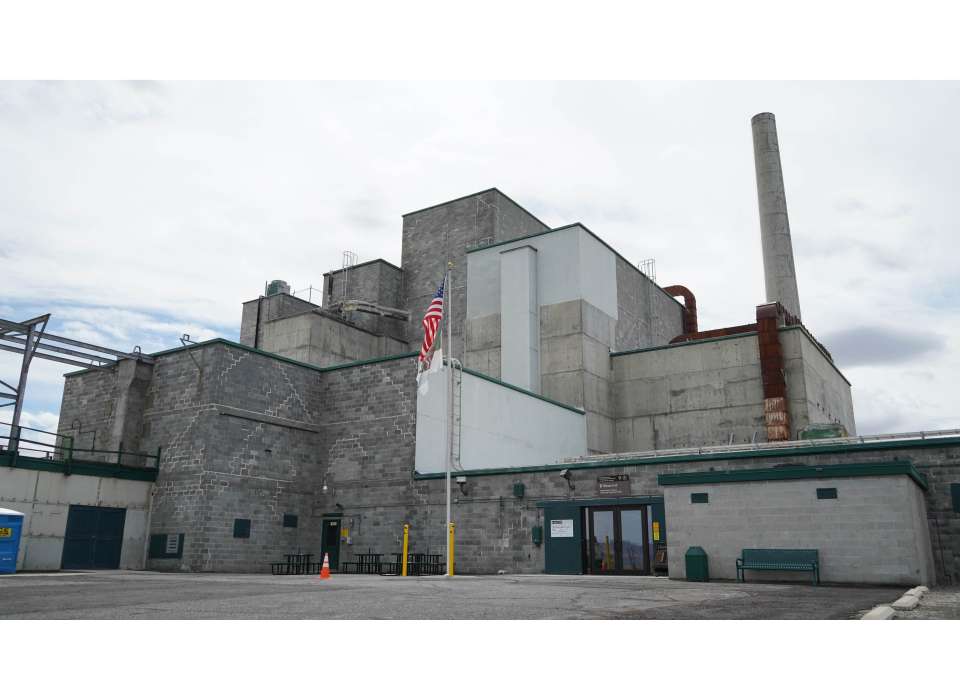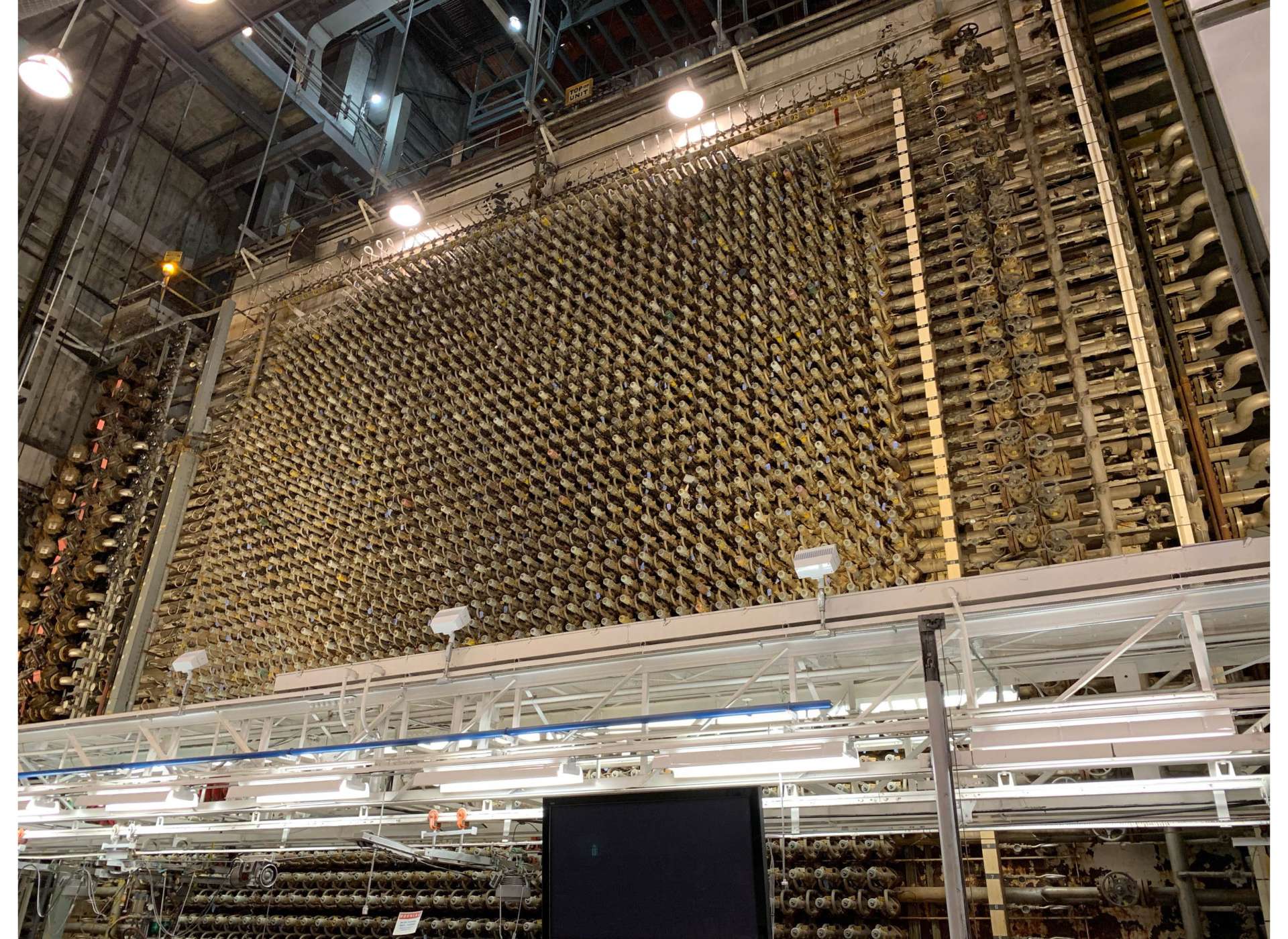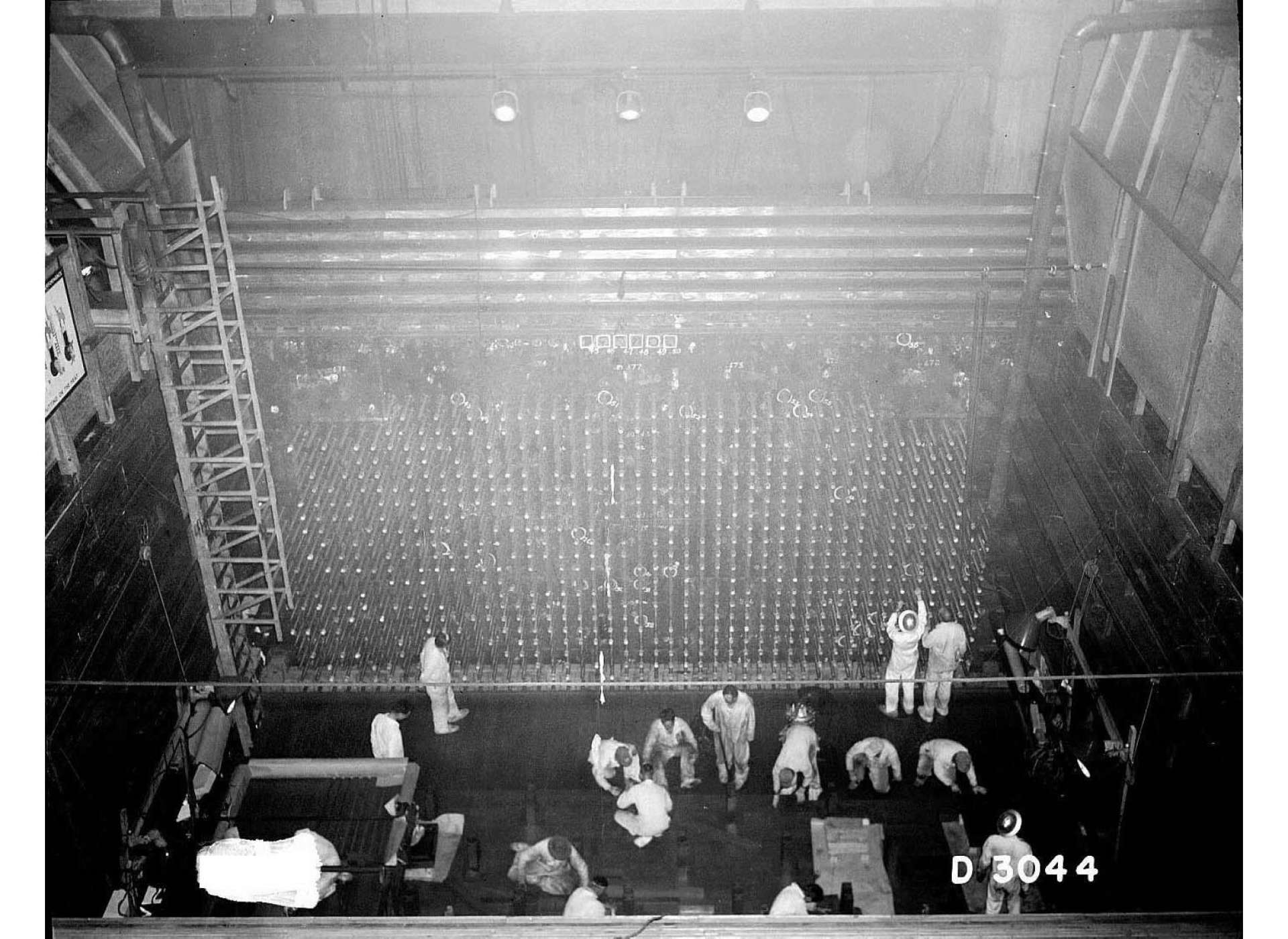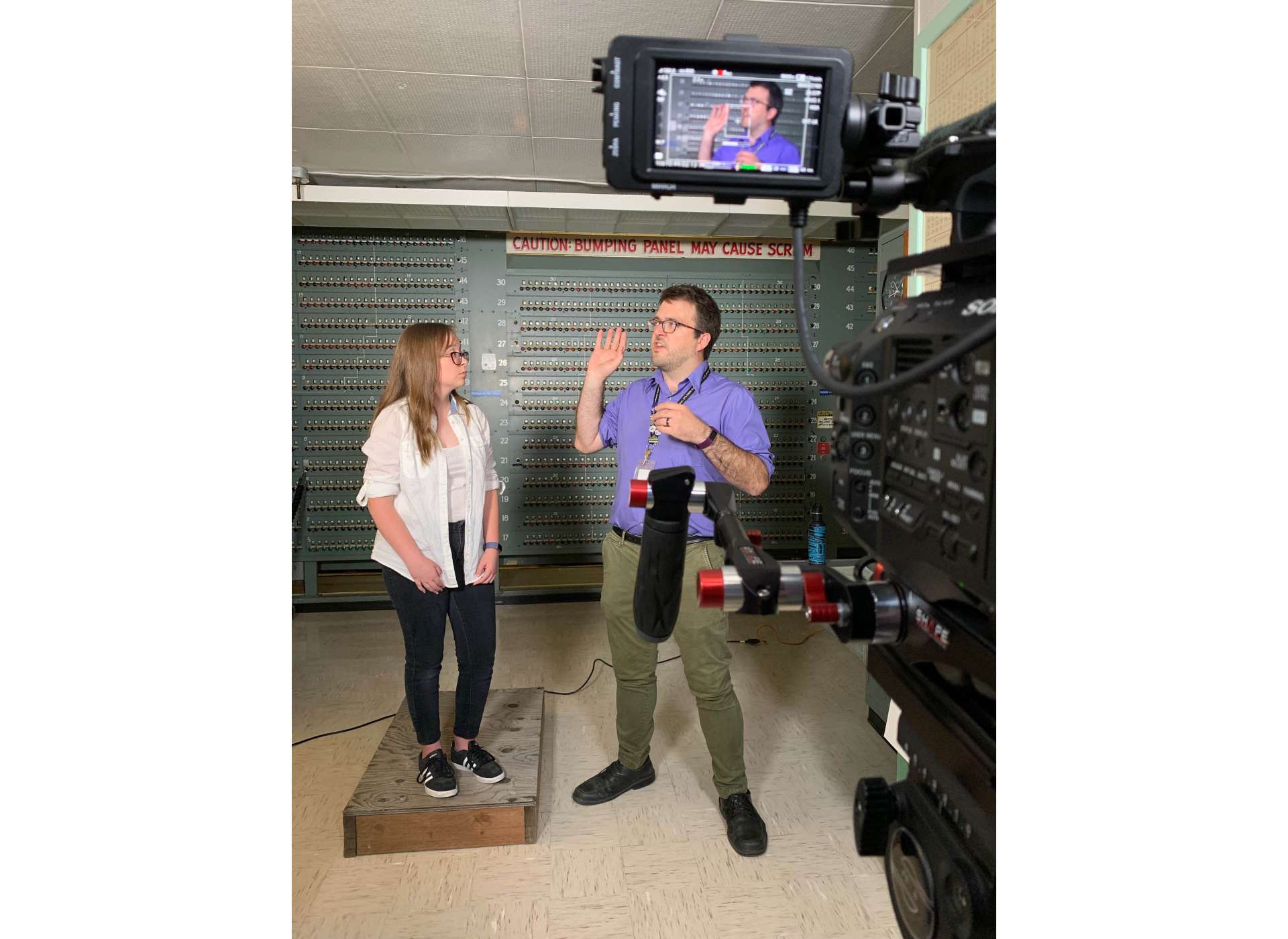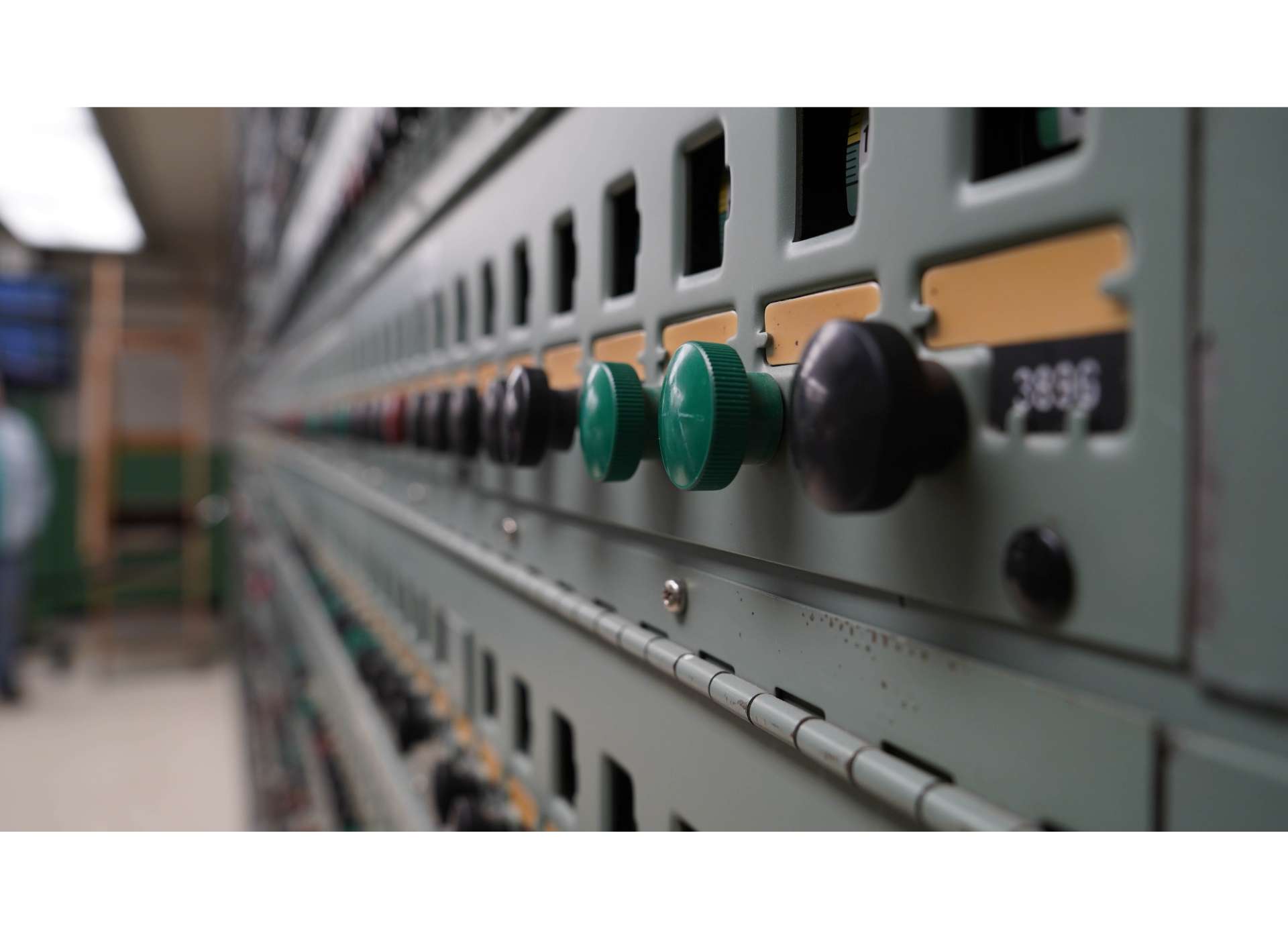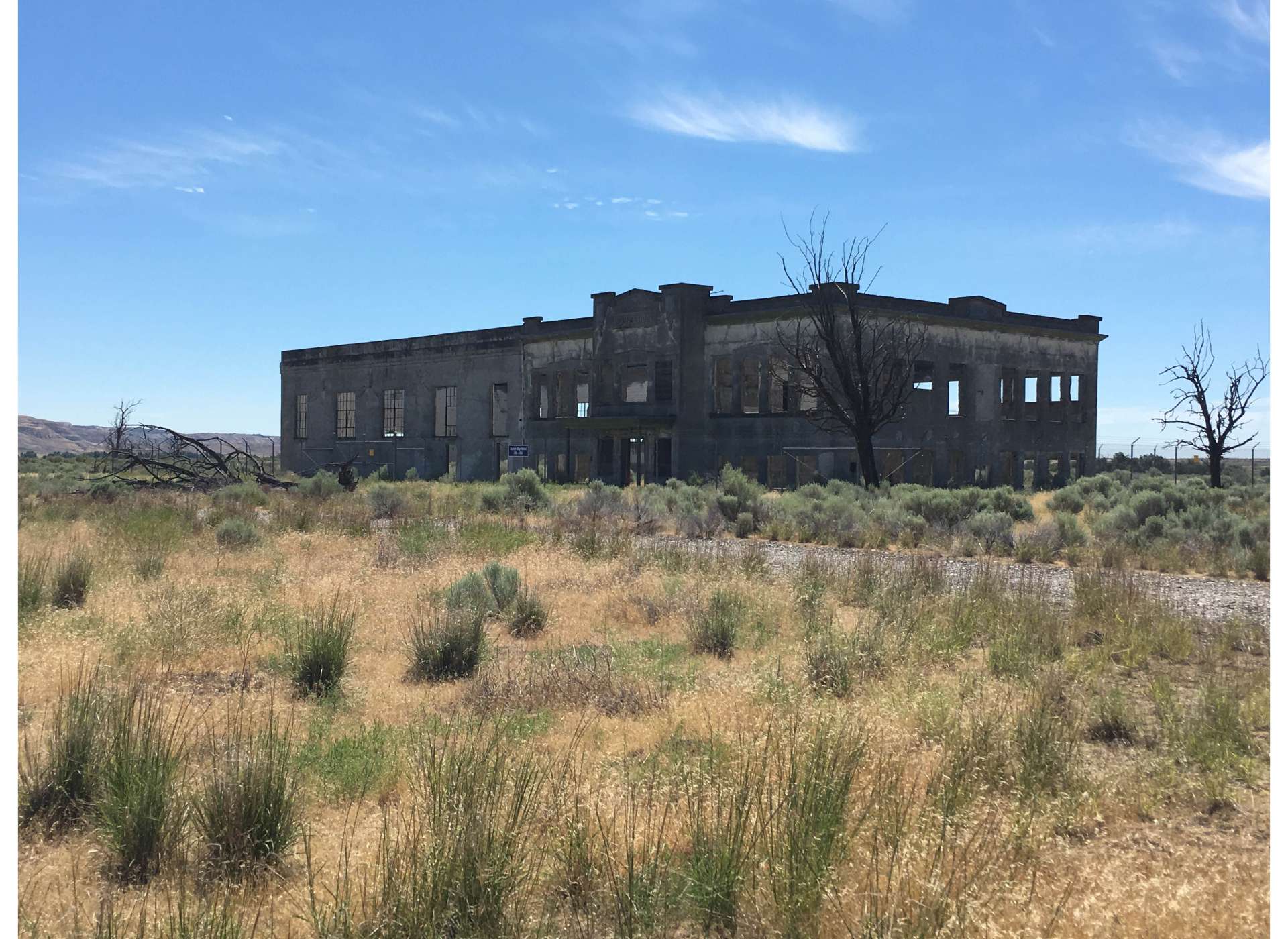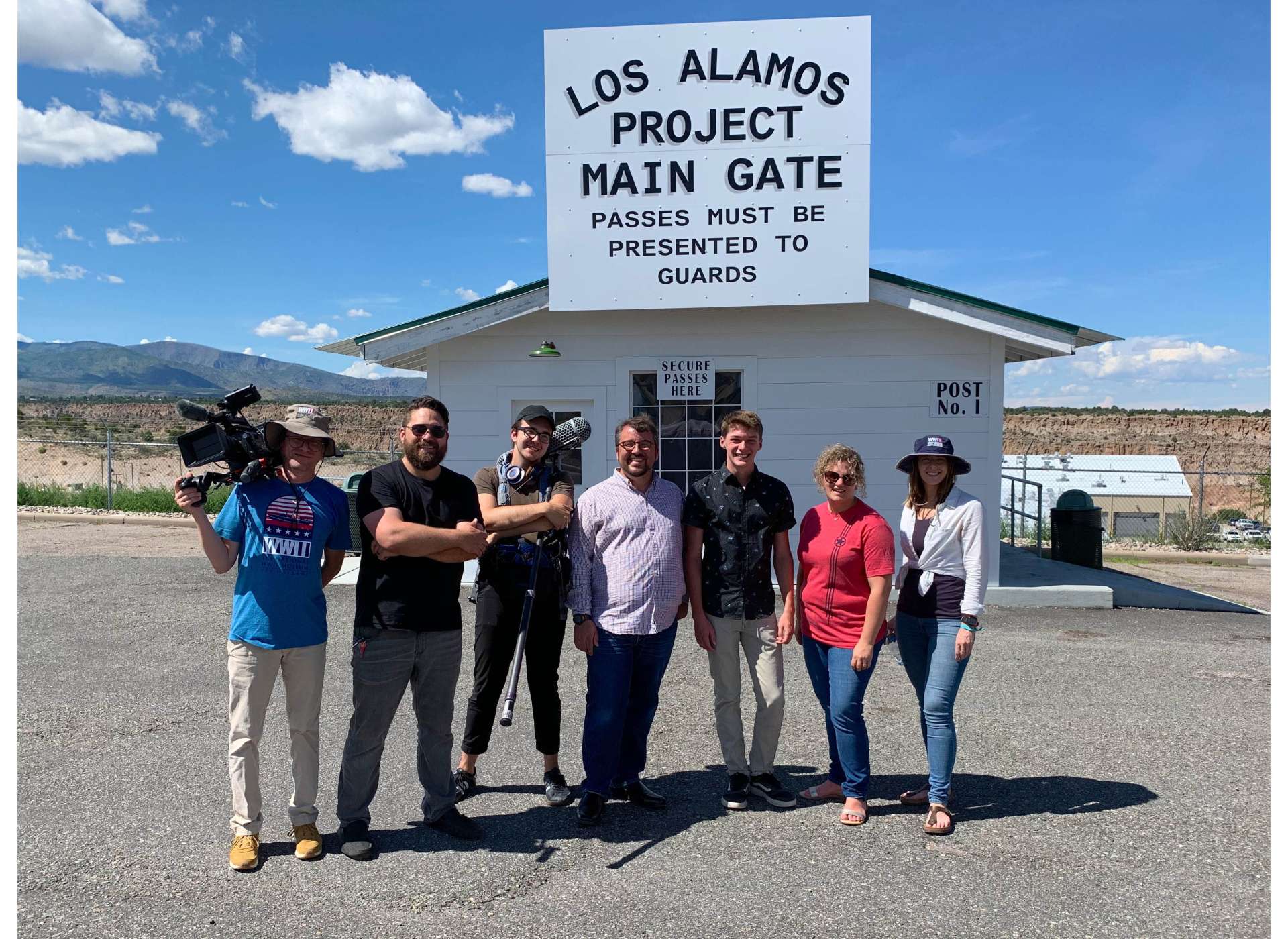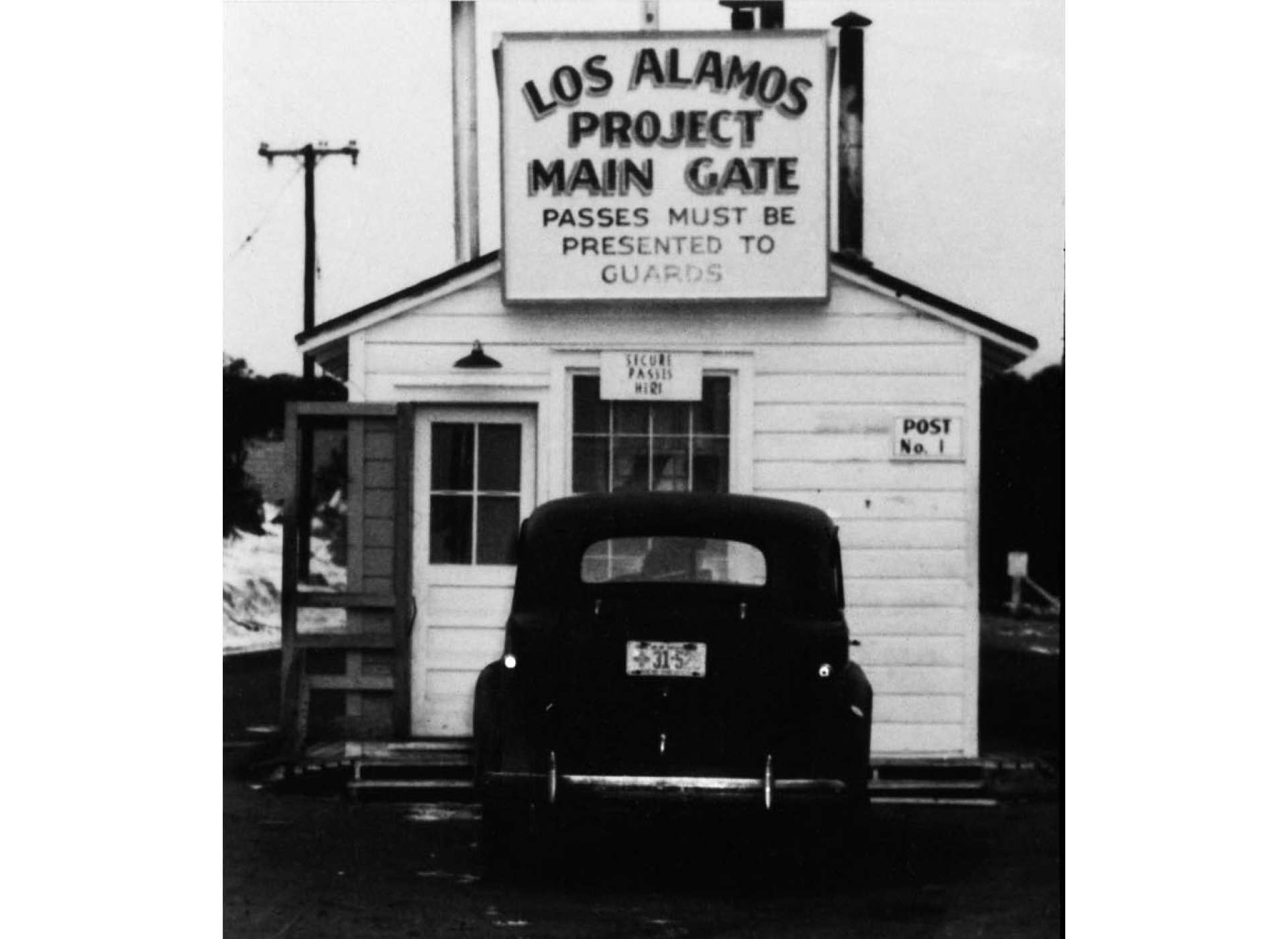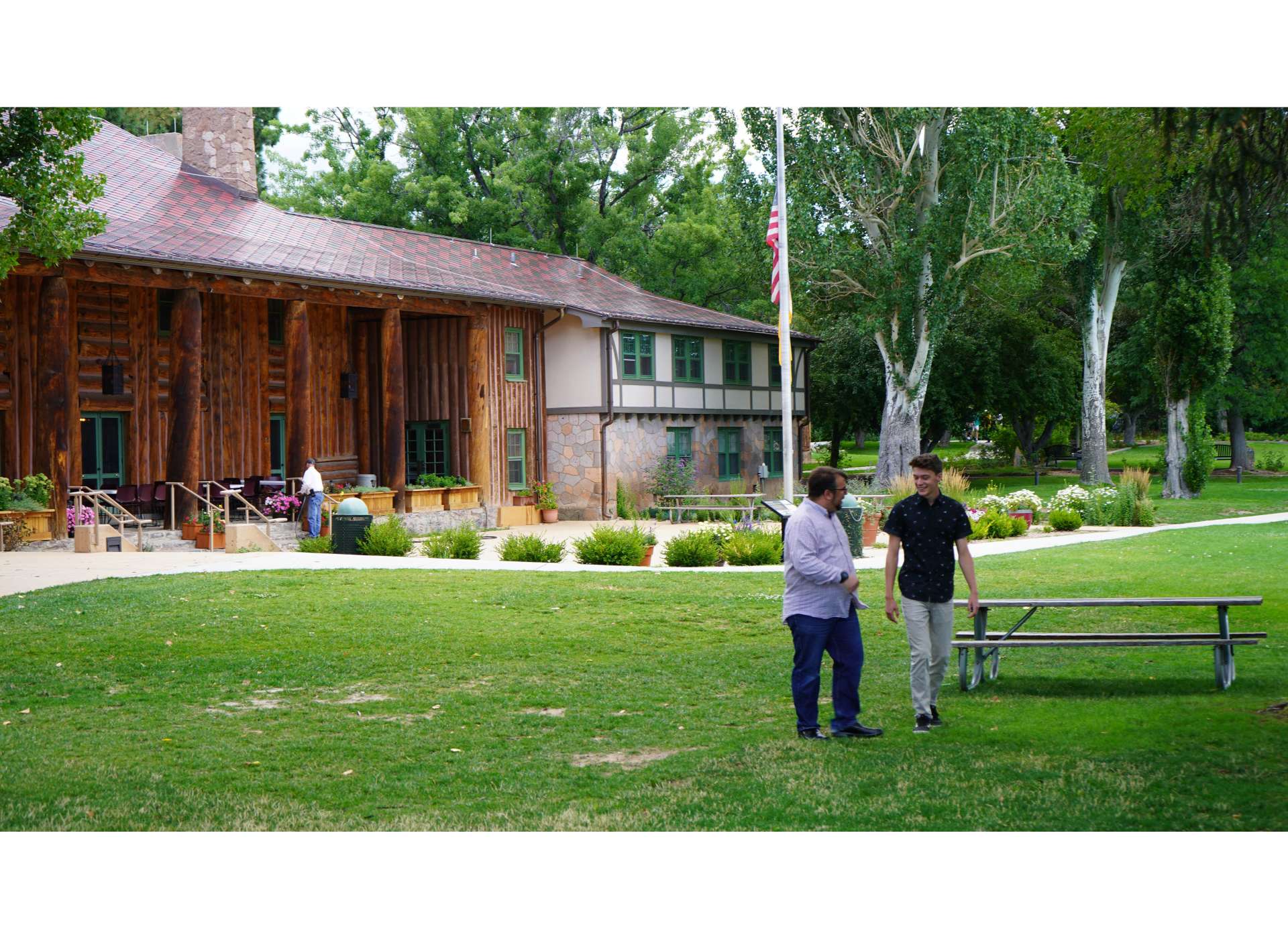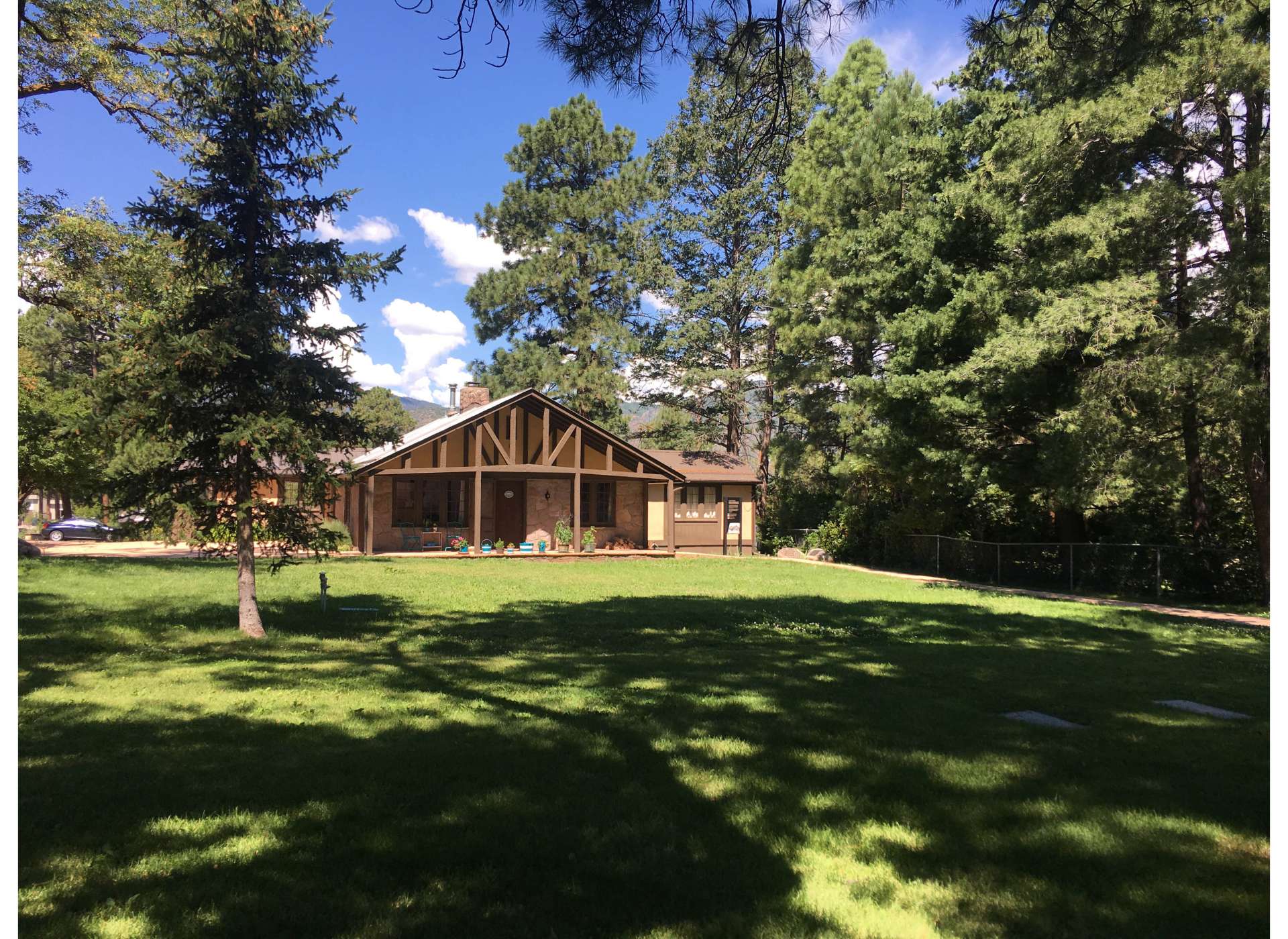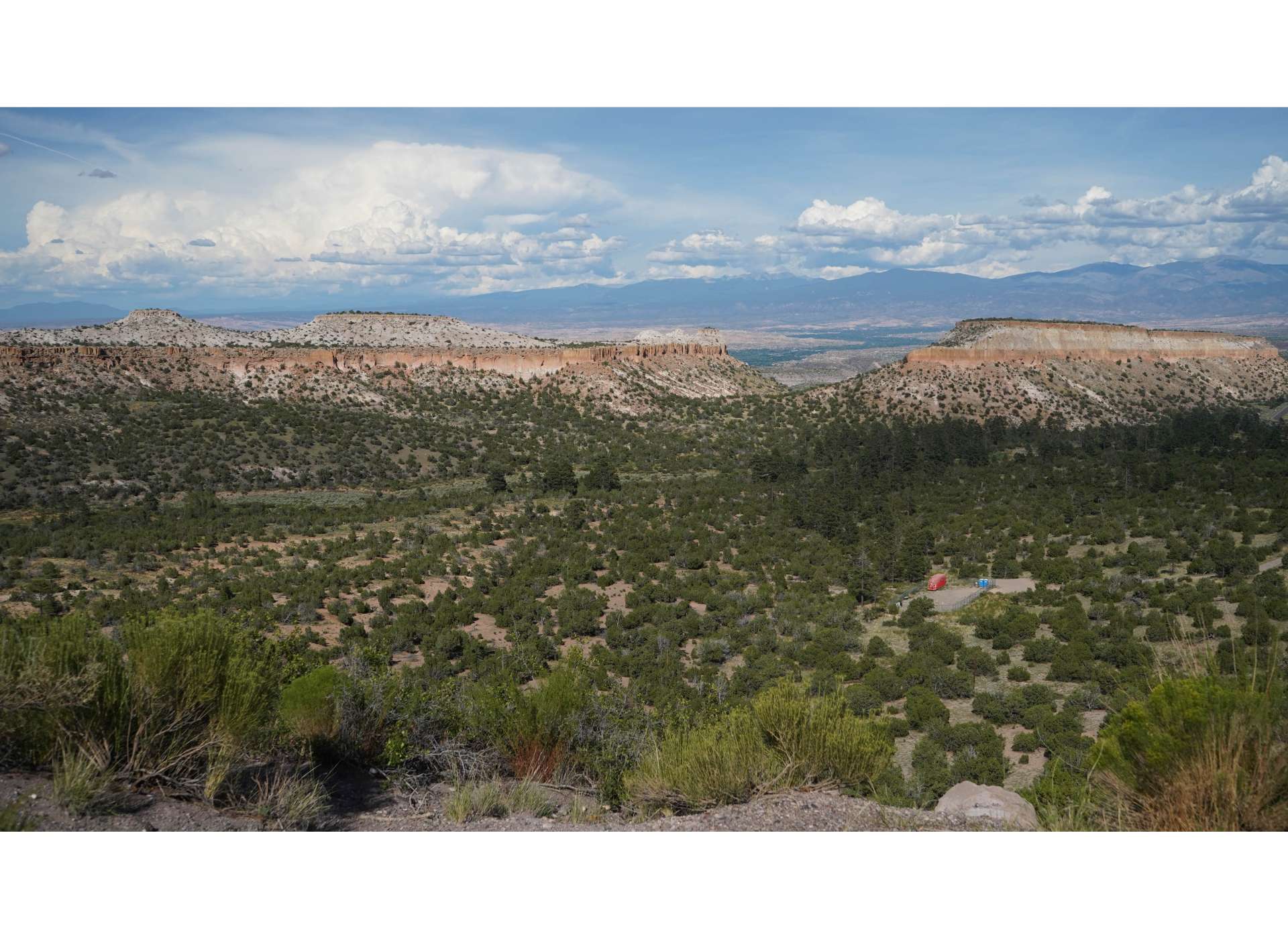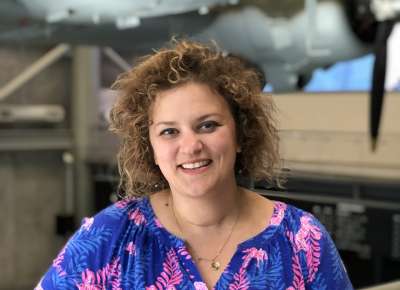Figure 1: B Reactor Museum on the Hanford Site
This summer, the Museum’s Distance Learning team is on the road documenting the sites and stories behind the development of the atomic bomb. Capturing the history and science of the Manhattan Project, filming sites include the B Reactor in Hanford, Washington, and the main Manhattan Project laboratory site in Los Alamos, New Mexico.
The footage from these visits will be turned into The Manhattan Project Electronic Field Trip, debuting in classrooms across the country in early 2020. At the center of the program are local student reporters from each filming location, sharing the important WWII history from their hometown.
The journey for the Museum team began in the Tri-Cities area of Washington, a short drive to the B Reactor Museum and Hanford site, where the plutonium for two of the three WWII-era atomic weapons was produced. This first industrial-scale nuclear reactor was built near the banks of the Columbia River in this remote shrub-steppe desert of southeastern Washington state. The B Reactor Museum is a pristinely restored artifact on a grand scale. As you walk down the main hallway, the reactor opens up to reveal the massive front face and 2,004 process tubes, containing the uranium fuel rods. Visitors can venture through much of the space, including the control room, with 2,004 corresponding pressure gauges, and a hand-painted sign above them reading “Caution: Bumping the panel may cause SCRAM.”
The Hanford site also includes some fascinating prewar relics, including the recently restored bank of the former town of White Bluffs. Along with the town of Hanford, White Bluffs was ordered by the government to be vacated and the properties destroyed for the Manhattan Project. The concrete sidewalks are still visible amid the shrubs and tumbleweeds. Driving down the road and through a herd of wild elk who have settled on the property, is the façade of the former Hanford High School. In use from 1916-1943, it provides a glimpse of what life was like in the area before the war.
-

Figure 2: Front face of B Reactor
-

Men working near the face of B Reactor in 1944. Courtesy of The National Archives.
-

Student Reporter Sara with Historian Robert Franklin in front of the control panel of the B Reactor
-

Pressure gauges of B Reactor's control panel
-

The facade of the old Hanford High School.
The next stop for the team was Los Alamos, New Mexico, the site chosen for “Project Y,” the main laboratory of the project. Lab Director J. Robert Oppenheimer and Manhattan Project Director General Leslie Groves were charged to find a site for the lab. High on a mesa on the Pajarito Plateau sat the Los Alamos Boys Ranch School. Oppenheimer was familiar with the area as a boy, and he and Groves agreed that it was a perfect spot for this top-secret work, as some of the existing school structures could be utilized for the project. This included the historic Fuller Lodge, which became the main mess hall and guest quarters during the war. Located just a short walk from the lodge are the homes of Oppenheimer and nuclear physicist and T Division Chief Hans Bethe.
Our hosts for the visit were the staff of the Bradbury Science Museum. In the 1950s, Los Alamos scientists believed that the lab needed a museum to house their early artifacts of nuclear research. Now named after the lab’s second director, Norris Bradbury, it is the window into the lab’s activities from the war to present day.
Viewers of The Manhattan Project Electronic Field Trip will also get a rare glimpse of the Trinity test site, now on the White Sands Missile Range. Here is where the test bomb, nicknamed “Gadget,” was detonated in July of 1945. Because there is still active testing on this site today, it is only open for public visitation two days a year.
Capping off the Electronic Field Trip will be expert commentary and artifact analysis from the Museum’s The Arsenal of Democracy: The Herman and George R. Brown Salute to the Home Front and Richard C. Adkerson & Freeport-McMoRan Foundation Road to Tokyo: Pacific Theater Galleries exhibits. The program will also feature live polling and Q&A, so students can participate without ever leaving their classroom. Teachers will have access to brand new curriculum about the Manhattan Project, written by the Museum’s WWII Media and Education Center staff. Stay tuned to the latest news from the Museum as the program develops and registration goes live. In the meantime, interested viewers can watch the Museum’s archive of past Electronic Field Trips and explore its volumes of WWII curriculum. This program is made possible by Lupo Family Charitable Fund. Additional support provided by The Dale E. and Janice Davis Johnston Family Foundation.
-

Film crew at the replica guard gate in Los Alamos, New Mexico
-

1943 Los Alamos Project Main Gate. Courtesy of Los Alamos National Laboratory.
-

Elliot Schultz, Historian of Science from the Bradbury Science Museum, with student reporter Isaac in front of Fuller Lodge
-

Nuclear physicist Hans Bethe's house in Los Alamos
-

The beautiful natural landscape around Los Alamos.
